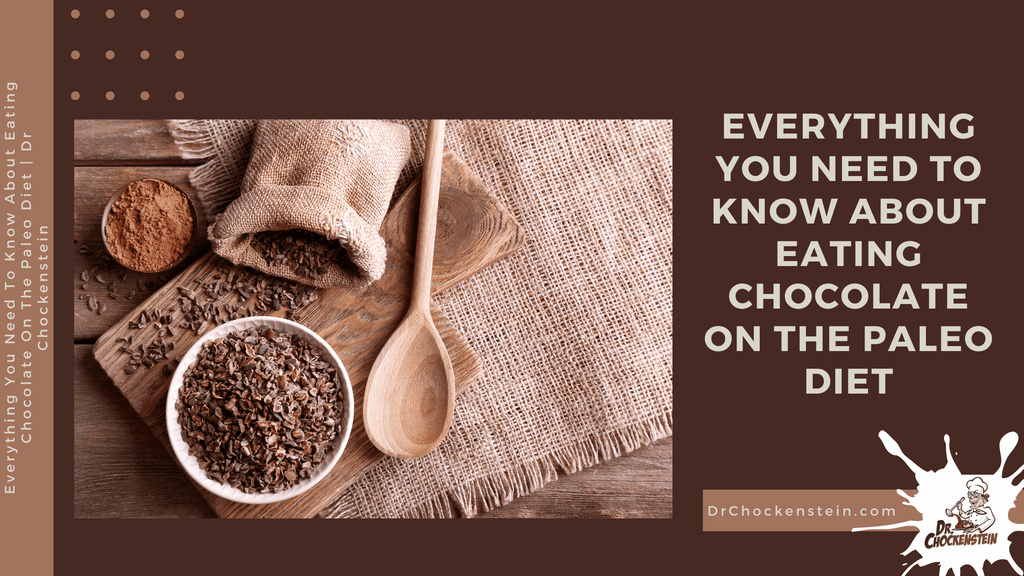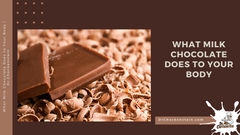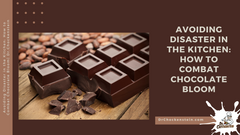Everything You Need To Know About Eating Chocolate On The Paleo Diet

The Paleo Diet, popularly known as the caveman diet or stone-age diet, is based on foods assumed to be accessed by ancient Paleolithic humans. While this type of eating has seen a resurgence in recent years, it's possible they may have even indulged in some chocolate! After all - areas within 20 degrees north and south of the equator make up what's called "The Chocolate Belt" so who knows?
Despite not being acquainted with our human ancestors of the Paleolithic age, we can assume that life was much different than today. Without the convenience of technologically advanced tools such as a spear or rock and without access to exquisite treats like coverture chocolate's and Bon Bons, it is safe to say they were less indulgent in their celebrations - until perhaps after an impressive hunt! Imagine how jubilant they might have been if able partake in something special...like a tantalizing fondue dip made from molten-chocolate perfect for dipping into burnt ends.
Fast Forward to 1975 when gastroenterologist Walter Voegtlin essentialy created the Paleo Diet. Practitioners of the Paleo diet try to duplicate what our Paleolithic predecessors lived on. The diet consists vegetables, fruits, nuts, roots, and meat while excluding foods such as dairy products, grains, sugar, legumes, processed oils, salt, and alcohol or coffee. AH, notice chocolate isn’t immediately listed as a stand alone food blacklisted…..
Essentially only whole foods are consumed. Whole Fruits, nuts, roots and meat. This means ZERO processing of the original whole ingredient. So, no smoke house almonds, no veggie chips, no hot dogs or Genoa salami or anything else glutinously delicious including chocolate. Fortunately there is a workaround on the chocolate end. The raw materials are not processed and are actually pretty good for you.
- Cocoa Butter :Cocoa butter is obtained from whole cocoa beans, which are fermented, roasted, and then separated from their hulls. About 54–58% of the residue is cocoa butter. Chocolate liquor is pressed to separate the cocoa butter from the cocoa solids.[4]The Broma process is used to extract cocoa butter from ground cacao beans. Cocoa butter is sometimes deodorized to remove strong or undesirable tastes. Cocoa butter contains a high proportion of saturated fats, derived from stearic and palmitic acids.Cocoa butter, unlike cocoa solids, has no more than trace amounts of caffeine and theobromine.
- Cocoa solids:Cocoa solids are a mixture of many substances remaining after cocoa butter is extracted from cacao beans. When sold as an end product, it may also be called cocoa powder or cocoa. Cocoa solids are a key ingredient of chocolate, chocolate syrup, and chocolate confections. In contrast, the fatty component of chocolate is cocoa butter. Cocoa butter is 50% to 57% of the weight of cocoa beans and gives chocolate its characteristic melting properties. Cocoa liquor or cocoa mass is a paste of roasted cocoa beans with cocoa butter and solids in their natural proportions. Recipes for chocolate require the addition of extra cocoa butter to cocoa liquor, leading to a cocoa solids surplus and thus a relatively cheap supply of cocoa powder. This contrasts with the earliest European usage of cocoa where, before milk and dark chocolate was popularized, cocoa powder was the primary product and cocoa butter was little more than a waste product.Cocoa solids contain flavanol antioxidants, amounts of which are reduced if the cocoa is subjected to acid-reducing alkalization.Health benefits have been attributed to cocoa flavonoids.
- Cocoa Nibs:Cacao nibs are bits of cacao bean that remain after the dried, fermented beans are roasted, cracked, and shelled. Usually cacao nibs are further processed into the chocolate liquor that ultimately becomes chocolate. Since finding out about just how antioxidant rich cocoa nibs are, the demand has risen recently by chefs, home cooks and healthy eaters like those on the Paleo Diet. With their appealing crunch, and a deep flavor reminiscent of coffee beans and chocolate, cacao nibs work well in both sweet and savory recipes. Low Temperature processing instead of roasting is making it possible to have “Raw” Cacao Nibs for those so inclined to only eat raw foods.
We hope you enjoyed this blog pos. Please do share the knowledge with your friends and family by emailing or sharing on social media - we would be deeply appreciative of a little help in spreading our message! Thank you for being such great supporters!



Leave a comment